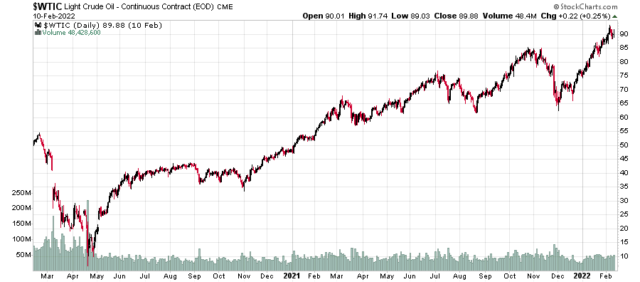This is taught in first year finance, but is an excellent reminder.
I will give an advance apology for the CFAs reading this, it is remedial material.
While the finance math here is simple, the applications are enormous in the realm of valuation, because your input variables have a huge determination on the output.
This math is as fundamental as the formula which drives much of accounting, which is “assets equals liabilities plus equity”. An entire professional body is driven around this very simple formula.
Likewise, in finance, learning how to capitalize a cash stream (and vice versa) is a fundamental calculation.
The value of a perpetual cash stream can be expressed as a single number in present value. You simply need a projection of cash flows, and you need to apply a rate of interest to account for the time value of money.
This is best expressed in an example.
Say you are promised $50 in two sums, $50 today and $50 in a year.
But you are offered a deal. I’ll pay you $80 today, lump sum.
If you do not care about the time value of money (an interest rate of zero), you would reject the deal. After the deal you’d have $80, but without the deal, you’d have $100 in a year. No way you’d take it.
We now bring in the concept of the interest rate, which is how much you’re willing to pay for money today versus money tomorrow.
Let’s say you think you can make 100% on your money. Clearly taking the deal is beneficial. Instead of $150 at the end of the ‘no deal’ scenario, you would instead be sitting on $160 if you took the deal.
It gets even more complicated if you think you can make 100% on your money for the first 6 months, and 25% thereafter. The rate of interest is a function of time, in addition to the cash flows. When it comes to valuations, both the cash flows and the rate of interest are never as black-and-white as these examples make them to be. There is significant uncertainty to deal with.
There is a break-even point where you would be theoretically indifferent between the two options. Your counterparty will have different interest rate expectations, and thus their break-even will be a different number and this is where markets are formed.
Implicitly when engaging in the market, we are guessing what the shape of the cash flow and interest rate function is, and trying to interpolate that into a capitalized value, which is traded in present day.
The more exciting part is the cash flows (is company XYZ going to make $$$ EPS in the next few years???) and, in general, the rate of interest is a more neglected variable.
The rate of interest has a huge impact on the temporal aspects of global decisions, whether to invest in projects, or to take deals (bird in the hand vs. two in the bush).
Let’s say you are a forestry company and your trees are growing biomass at 4%, and the interest rate is 3%. It makes sense to keep those trees in the ground. At an interest rate of 5%, it makes sense to harvest.
In general, higher interest rates force one to be more presently oriented, while lower interest rates afford the luxury of being future oriented.
This is evident in a couple examples. One is in highly inflationary economies (e.g. Argentina), hard assets are held precious. Investments in the future must have large payouts today and very short recovery periods. Commodity investing is great in high rate environments, especially if you already have a producing asset.
Another example is the (hopefully) fictitious example of a planet-killing asteroid hitting planet earth in a couple decades (there was a recent horrible movie regarding this, please erase this out of your mind when thinking of this example). Upon the discovery of the asteroid, interest rates will rise dramatically, but it wouldn’t be insane like if such a discovery was obviously an irrevocable impact in a year – the cash flow function would have some expectation after the two decade mark because we might be able to avoid the collision. Either way, the present becomes much more valuable.
Let’s fast forward to 2022, in the present.
Historically, especially since 2008, short term interest rates have been kept to a minimum, and long term interest rates have also been to record lows.
This dramatically increases the present value of future cash flows. Companies with “future promise” are valued higher as a result.
This is starting to reverse for various reasons.
It has been about 40 years since the financial markets have had to deal with a sustained amount of inflation and a rising interest rate environment.
The playbook is fundamentally different. Things that worked in the past will no longer work in the present. The monetary base itself, the measuring stick for performance, is starting to change, which creates its own layer of uncertainty.
All of this is part of “the turn” that I have alluded to. Those that do not pay attention will be investing with one eye blindfolded.
